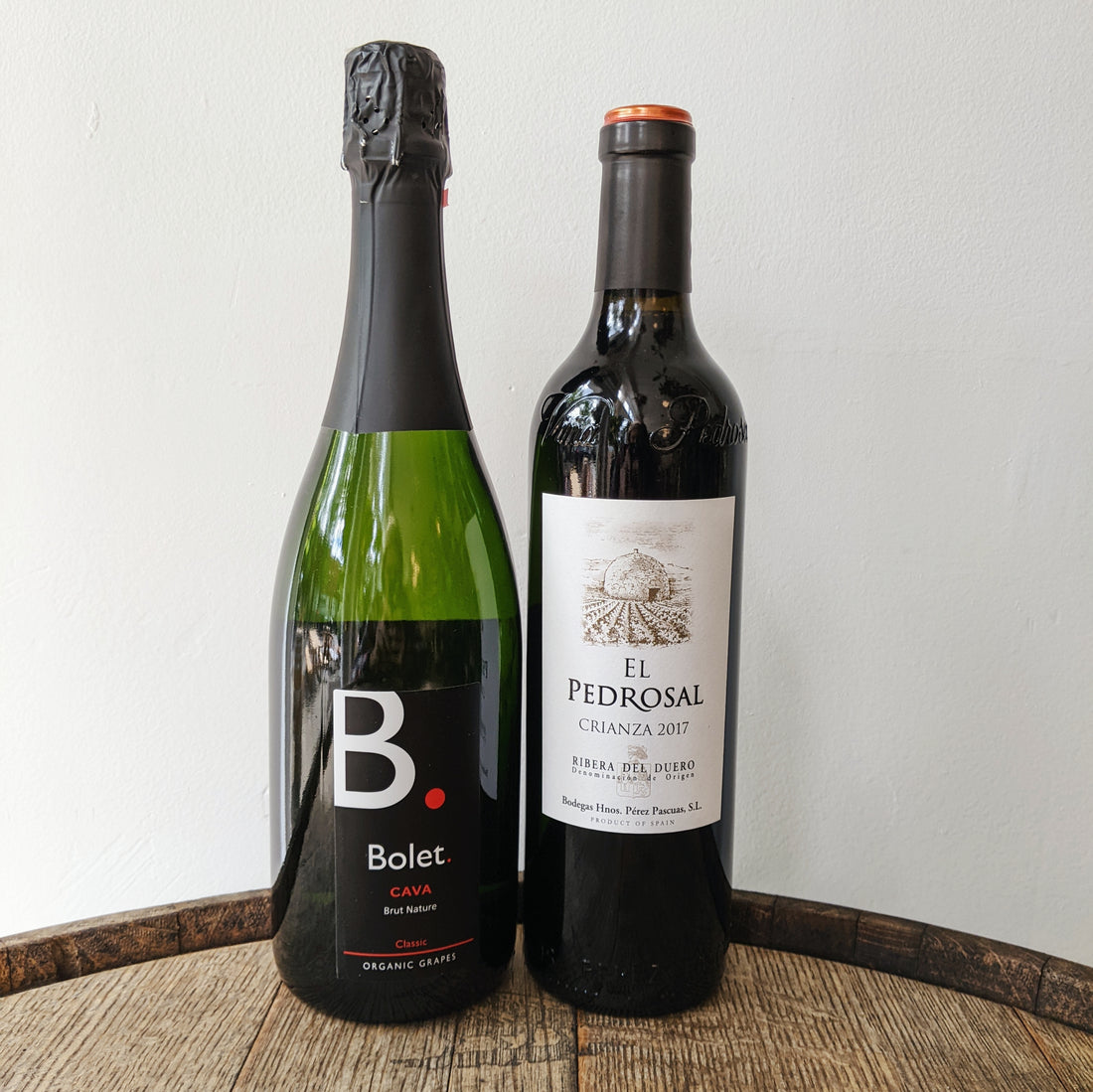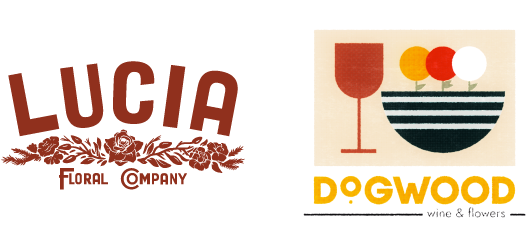
February 2022 - Spain
February 2022
Spain
Featuring:
Cavas Bolet, ‘Brut Classic’ NV
Pérez Pascuas, ‘El Pedrosal’ Crianza Ribera del Duero 2017
At a glance:
- Wide range of geography and climate - from dry high desert to balmy coastal bluffs, and everything in between
- Fantastic value wines of nearly every style - sparkling, white, red and rose. Even Spanish dessert/fortified wines are a steal!
- The classic regions still reign supreme for export, but historically regional-only wines have gained traction in the last 20 yrs.
- Classic regions - Rioja, Ribera del Duero, Rias Baixas, Priorat, Cava
- Up-n-coming regions - Bierzo, Txakolina/Pais Vasco, Terra Alta, Rueda, Andalusia, Costers del Segre
- New sub-zones within classic regions (Rioja, Rias Baixas) allow for more specificity in terroir
Sometimes this wine club gets very granular and laser focused on one region (i.e. the Town of Brézé, July 2021), and other times we stay pretty general… i.e. the whole country of Spain!
It’s hard not to be excited about Spain as a whole in this day and age, though. The country has such a broad range of classics to rest it’s laurels on, that many people think of it as tired and basic. And while these classics can be delicious (as we’ll taste today), there’s also a spectacular ‘New Spain’ waiting to be discovered. Thanks to a number of key importers stateside, the backwater regions are more accessible than ever. Coupled with advancements of winemaking technology and technical schooling, now you have small, Spanish producers that have been making wine for generations now achieving international acclaim. And while we’ll taste the more ‘classic’ side of Spanish wine this month, we’re focusing on two producers that deliver incredible value for these more elevated appellations. So think of this as Spain 101, but from a small arts college. Later this year we’ll have some 200 and 300-level classes and delve into the less known regions and more hidden producers.
Cavas Bolet, ‘Brut Classic’ NV
Small-production Cava is one of the most underrated wines on the planet. Yes, it’s true that the larger producers can make some not-very-appealing stuff, but when you find a small producer who’s been around for a while and hasn’t ‘gone corporate’ - you’re almost always bound to get some serious Quality:Price ratio from the wines. This is one of such wines.
The Bolet family has grown/produced wine for over seven generations, however they didn’t always make Cava. At the beginning of the 20th century, the world was facing the phylloxera epidemic and Jaume Bolet Galofré replanted the whole estate to Xarel·lo, Macabeo, and Parellada. These three grapes (the backbone of Cava) were gaining in popularity and, by grafting them to American rootstock, gave the family phylloxera-resistant vines to farm. Over the years, the family continued to plant new vines and today farms roughly 66 acres. In the 1970s, Antoni Bolet Pascual began to modernize the winery by installing machinery and stainless steel tanks, and in 1982 they started bottling and labeling commercially under the ‘Cavas Bolet’ family label that remains in use today.
This wine, a blend of all three above grapes, is gently pressed to juice, fermented for about 2 weeks, and then given the secondary fermentation in the bottle for another 12 months. In sparkling wine terms, that means the wine undergoes ‘Champagne method’ production (all Cava does) by having the second, bubble-producing fermentation in the bottle. Prosecco, on the contrary, does this secondary fermentation in a large pressurized tank before being moved to the bottle (aka Charmat method). Why does this matter? Well, bottle fermentation is time consuming and expensive. It’s much easier to do everything in a big tank and bottle it at the end. It’s also quite a bit more labor intensive due to the riddling and disgorgement process. But,the finished product is usually better - with smaller bubbles and more autolytic notes.
So why is Cava a value? Well, it usually sees some of the same quality winemaking as Champagne, albeit with reduced lees aging, and can be ⅛ - ½ the price of a bottle of Champagne. Same production method, different grapes, different Postal Code on the bottle and serious savings.
Pérez Pascuas, ‘El Pedrosal’ Crianza Ribera del Duero 2017
Forewarning, this Tempranillo is quite a bit different from the past several months’ Club Reds. While we usually opt for something light and acid-driven, with minimal oak, this is a complete 180. It’s big, it’s bold, it’s oaky and it’s fruity. And it’s pretty dang good.
Spain, like most of California, is HOT. It’s hard to make a light and finessed wine in a place that gets 300 days of sun a year. That’s not to say there aren’t such Spanish wines (there are and they’re great), but it’s not really where you go to seek out that kind of wine. Typically, Rioja and Ribera del Duero are the dueling siblings of big Spanish Wine. Rioja is the older of the regions, with a history between 700 and 80 years older than Ribera (depends what you consider ‘official’). But Ribera del Duero has surpassed Rioja as the more muscular and fuller-bodied style, typically more favored by American palates. While Rioja’s tend to be more expressive of red fruit (cherry) and American oak (coconut, vanilla), the Ribera del Duero wines trend towards black fruit (cassis, blackberries) and French oak (clove, cinnamon).
Pedrosa’s story begins with Mauro Pérez and the lands that he loved and worked on throughout his life. He was a hard-working and innately intelligent man who taught his children to respect the land and take pride in their work. Today, the winery is on the vineyards that he left his family, in Pedrosa de Duero in the Spanish province of Burgos. Believing deeply in the huge potential of the family vineyard, in 1980 (2 yrs before the Ribera DO was founded), the Pérez Pascuas siblings decided to found their own winery, pursuing their dream of making top quality wines and keeping the long tradition of winemaking alive. Today, the siblings farm 120 hectares of vineyards and produce roughly 5,000 cases of wine per vintage.
This wine, The ‘El Pedrosal’ Crianza is 100% Tempranillo from ~35 year old head trained vines. It’s aged in a combination of French and American oak for 18 months. While this wine is given the Crianza designation by the Pedrosa brothers, it actually could be considered a Reserva by Ribera del Duero’s aging requirements. Like Rioja, Ribera has 4 tiers of aging. The youngest, Joven, is a fresh wine meant for immediate consumption. The next step up, Crianza, is aged for a year in cask and at least 3 months in the bottle before release. Reserva’s are aged a minimum of 1 year in cask and 2 years in bottle. Grand Reserva’s are aged even longer (4 yr total). The highest quality producers, like the Pedrosa, will make their own ‘house requirements’ higher than legally required, usually by 50% or more. Hence why this hits the legal requirements to be a Reserva but is bottled as a Crianza.
